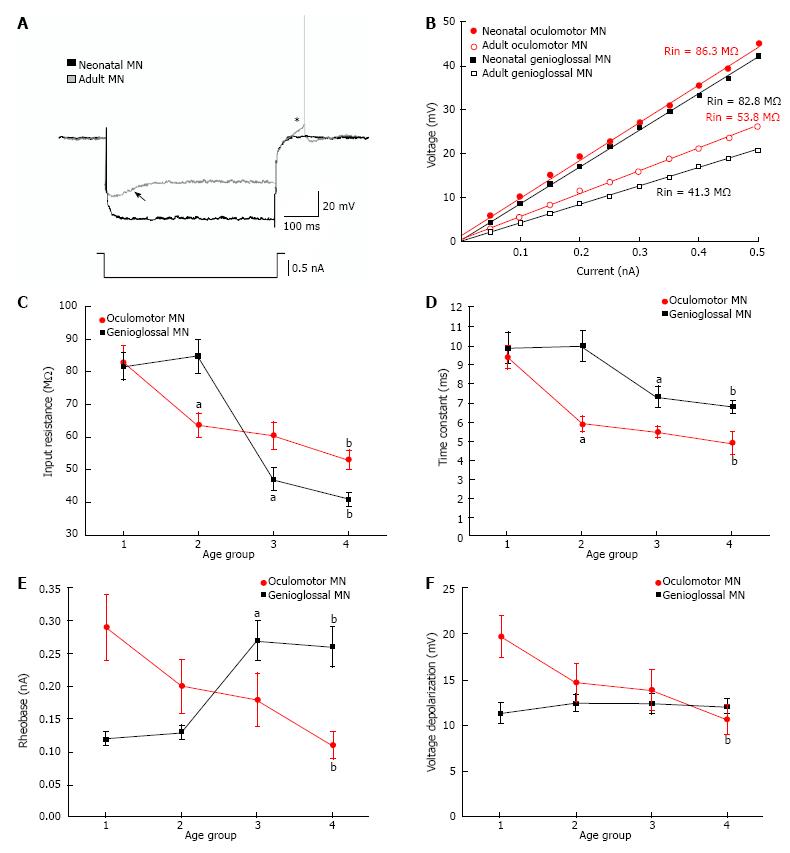Copyright
©The Author(s) 2015.
World J Neurol. Dec 28, 2015; 5(4): 113-131
Published online Dec 28, 2015. doi: 10.5316/wjn.v5.i4.113
Published online Dec 28, 2015. doi: 10.5316/wjn.v5.i4.113
Figure 3 Postnatal maturation of passive membrane properties of motoneurons from genioglossal and oculomotor nuclei.
A: Voltage membrane response for one representative GG neonatal MN and one representative adult MN to negative current pulses of 0.8 nA. As shown, the same current amplitude of current evokes a larger hyperpolarization in the youngest MN. Also note the presence of sag (see arrow) and postinhibitory rebound (asterisk) in the adult MN but not in the neonatal one; B: Relationship between current intensity and voltage response in neonatal and adult MNs: Neonatal OCM MN (filled red circle); adult OCM MN (open red circle); neonatal GG MN (filled black square); adult GG MN (open black square). The slope of the relationship determines input resistance. Note that, for both populations of MNs, input resistance decreases with development although this decrement is bigger for GG MNs; C-F: Plots illustrating changes on input resistance (C), time constant (D), rheobase (E) and voltage depolarization (F) during postnatal development for GG and OCM MNs. Input resistance and time constant decrease during development in both populations, while rheobase increases in GG MNs and decreases in OCM MNs. The "a" indicates statistical significance between two consecutive age groups; and the "b" represents statistical significance between age group 1 and age group 4. The age groups 1,2,3 and 4 correspond to P1-P5, P6-P10, P11-P15 and P21-P30, respectively. The data from GG[4] and OCM[10] come from previous studies. MNs: Motoneurons; GG: Genioglossal; OCM: Oculomotor.
- Citation: Carrascal L, Nieto-González J, Pardillo-Díaz R, Pásaro R, Barrionuevo G, Torres B, Cameron WE, Núñez-Abades P. Time windows for postnatal changes in morphology and membrane excitability of genioglossal and oculomotor motoneurons. World J Neurol 2015; 5(4): 113-131
- URL: https://www.wjgnet.com/2218-6212/full/v5/i4/113.htm
- DOI: https://dx.doi.org/10.5316/wjn.v5.i4.113









